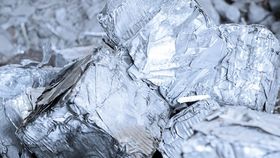Steel has a constant presence in our everyday lives. As many as four out of five German-made cars feature steel from GMH Gruppe. Not only is it extremely versatile but it is also affordable, immensely strong and can be used in light-gauge thicknesses. By channelling our knowledge, capabilities and commitment into steel as a raw material – and by consistently applying the utmost precision – we are able to find solutions for a whole host of sectors that are always individually designed to meet the requirements of our customers.
Consistently unique
Steel is a material with a future but what makes it truly unique is the fact that it is 100 per cent recyclable. Within GMH Gruppe, steel goes through a state of the art pre-sorting process before being recycled. Stainless and high-grade steel are then manufactured from this material for the most important industries in the market. The steel recycling process therefore allows scrap metal to be transformed into new steel products that meet the highest requirements with practically zero compromise on quality.
Effective steel production
While other materials such as carbon-fibre-reinforced plastics are difficult or too costly to reuse, steel is both effective and efficient on account of its recyclability. Around half of all the steel produced worldwide is melted down from steel scrap, just as it is in the electric arc furnaces at the Georgsmarienhütte steel plant in Germany. This is where a whole host of recyclable scrap is converted into raw materials for manufacturing premium-quality products – and into a material of the future. The Georgsmarienhütte plant has therefore become a leading European provider of steel bars, crude steel and bright steel.
Saving energy and raw materials
Particularly when it comes to saving energy and raw materials, steel recycling offers tremendous potential compared to primary steelmaking using iron ore. In fact, the use of arc furnaces uses around 55 per cent less energy than primary production processes. Melting down a tonne of steel scrap cuts the need for raw materials by around 650 kilogrammes of coal and one and a half tonnes of iron ore. It is this type of efficiency that allows us to shoulder our responsibilities in the steel industry – a sector that makes intensive use of energy and raw materials.
Increased sustainability with every recycling phase
The use of recycled steel as a raw material is also growing in importance when it comes to climate protection. In fact, steel recycling generates up to 50 per cent fewer CO2 emissions than primary production processes. With every tonne of steel, we save a tonne of carbon dioxide emissions from being released into the environment. Our state-of-the-art production facilities help us to ensure that we always remain significantly below the legally required limits. What’s more, our steel becomes more sustainable with every recycling process because its ecological footprint gets smaller each times it is reused. And with the continuous reuse cycle of manufacturing, use, processing and recycling, steel really is on the right track for the future.

